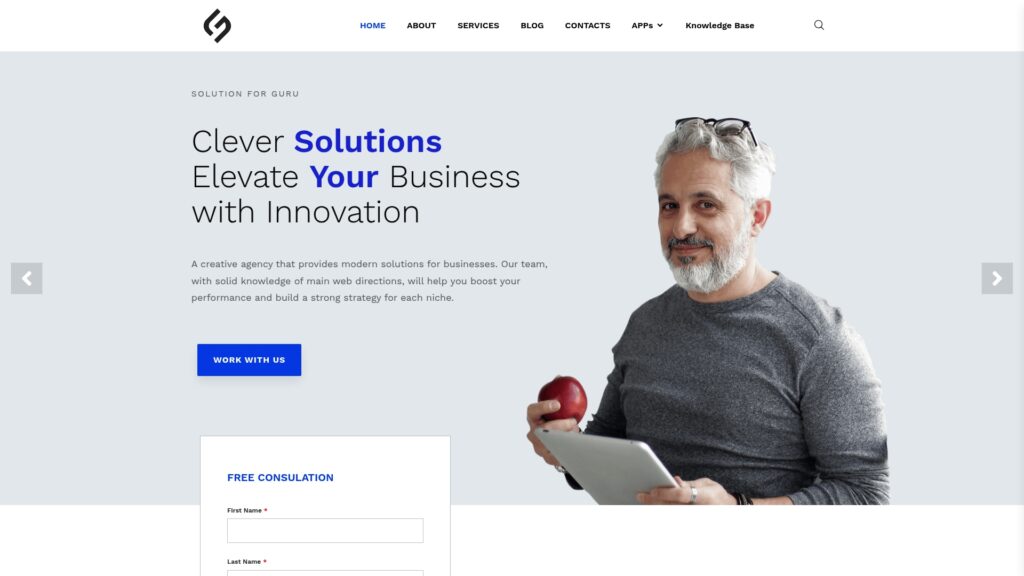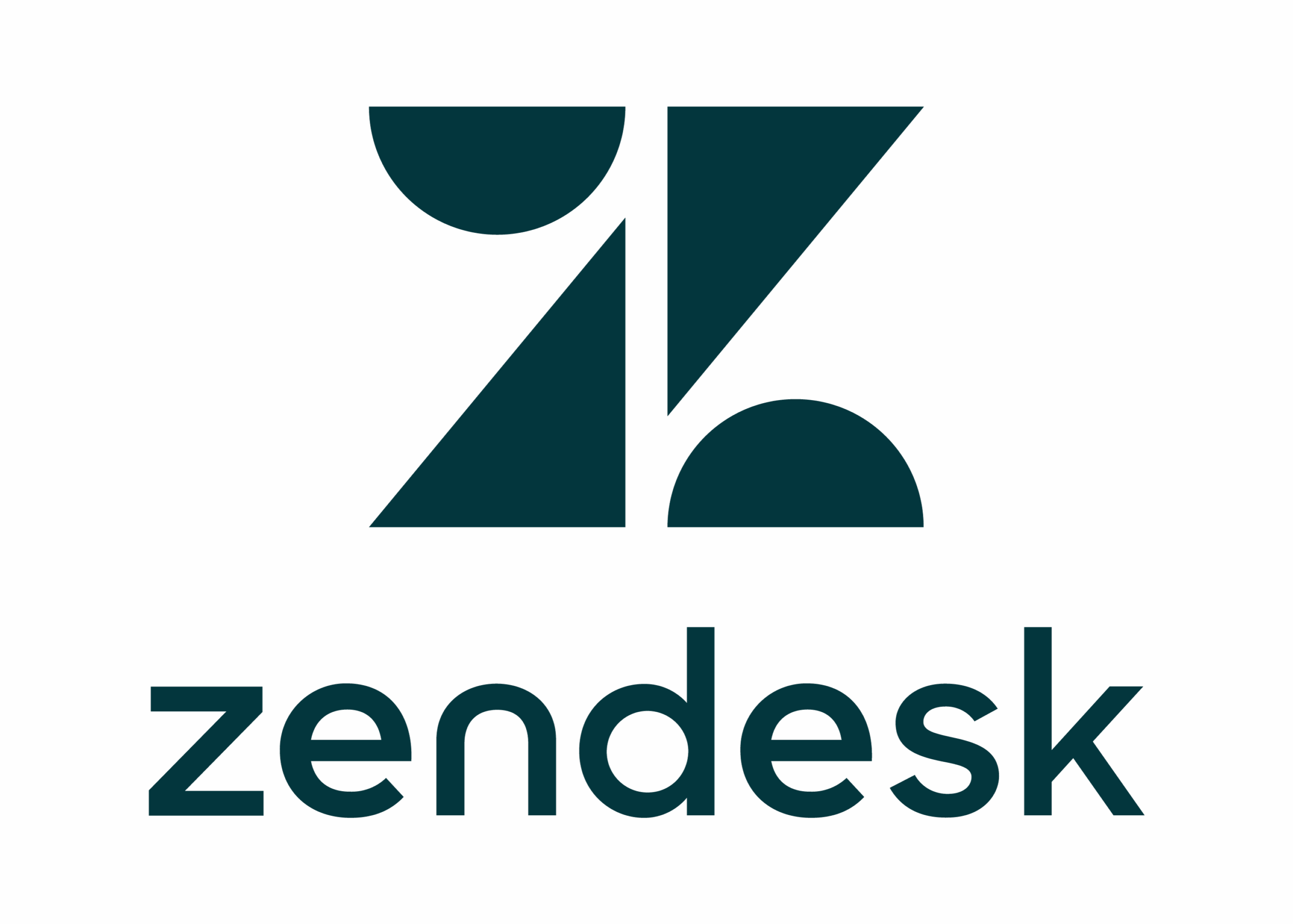How Can Organizations Measure the True ROI of ITSM Investments?

In today’s competitive business landscape, IT leaders face mounting pressure to demonstrate tangible returns on technology investments. IT Service Management (ITSM) represents a significant commitment of resources, time, and organizational energy, making return on investment (ROI) measurement not just important but essential. Understanding how ITSM delivers measurable business value empowers organizations to make informed decisions, optimize implementations, and secure executive support for ongoing initiatives. This comprehensive guide explores the methodologies, metrics, and strategies for quantifying ITSM’s financial impact while demonstrating how leading platforms transform theoretical benefits into concrete business results.
Table of Contents
- Quick Summary
- What Is ROI and How Does It Relate to ITSM Investments?
- Why Is Measuring ITSM ROI Challenging Yet Critical?
- How Do Leading ITSM Platforms Deliver Measurable Value?
- What Are the Primary Cost Components of ITSM?
- How Can Organizations Quantify Direct Cost Savings?
- What Business Value Metrics Demonstrate ITSM Impact?
- How Should Organizations Calculate ITSM ROI?
- Summing up
- Frequently Asked Questions
- Partnership with Solution for Guru
Quick Summary
Measuring the return on investment (ROI) of IT Service Management (ITSM) requires comprehensive analysis of both direct cost savings and broader business value creation. ITSM investments deliver measurable returns through reduced operational costs, improved IT team efficiency, enhanced employee productivity, decreased downtime, and better resource utilization. Leading platforms like Freshservice, ManageEngine, and Zendesk provide built-in analytics and reporting capabilities that enable organizations to track key performance indicators and quantify financial impact. Successful ROI measurement combines hard financial metrics with softer business value indicators such as customer satisfaction, compliance improvements, and strategic agility. Organizations that approach ROI measurement systematically, leveraging expert guidance from partners like Solution for Guru, can demonstrate compelling business cases that secure executive support and justify ongoing ITSM investments.
What Is ROI and How Does It Relate to ITSM Investments?
Return on investment (ROI) represents a fundamental financial metric that measures the profitability of an investment relative to its cost. Expressed as a percentage or ratio, ROI compares the net benefit gained from an investment against the total amount invested. The basic ROI formula is straightforward: ROI = (Net Benefit / Total Investment Cost) × 100.
In the context of ITSM, calculating ROI becomes more nuanced than simple financial investments because benefits extend beyond direct cost savings to encompass efficiency improvements, risk reduction, and strategic capabilities that enable business growth. Nevertheless, the core principle remains constant: organizations must demonstrate that the value created by ITSM exceeds the resources invested in implementing and operating these systems.
Categories of investment costs
ITSM investments typically include several cost categories. Software licensing represents the most visible expense, covering subscription fees for platforms like Freshservice, ManageEngine, or Zendesk. Implementation costs encompass consulting services, configuration efforts, integration development, and data migration. Training expenses ensure that IT staff and end-users can leverage ITSM capabilities effectively. Ongoing operational costs include system administration, maintenance, support, and continuous improvement activities.
Conversely, ITSM benefits manifest across multiple dimensions. Direct cost reductions occur through decreased incident resolution times, reduced manual effort, lower software licensing costs through better asset management, and minimized overtime expenses. Efficiency gains emerge from automation of routine tasks, streamlined workflows, improved first-contact resolution rates, and enhanced IT team productivity. Business value creation includes improved employee productivity, reduced business disruption, enhanced customer satisfaction, better compliance posture, and increased organizational agility.
The relationship between ROI and ITSM is particularly important because ITSM initiatives often require significant upfront investments before benefits fully materialize. Organizations implementing ITSM must typically invest in software licenses, implementation services, training, and process redesign before experiencing substantial returns. This investment pattern creates situations where executives and stakeholders question whether ITSM spending delivers sufficient value to justify continued investment.
Why is it important to demonstrate positive ROI?
Therefore, demonstrating positive ROI serves multiple critical purposes. It validates initial investment decisions, securing stakeholder confidence in chosen strategies. It justifies ongoing operational expenses, ensuring continued funding for ITSM programs. Also it guides optimization efforts by identifying which ITSM capabilities deliver the greatest value. It enables data-driven decisions about platform selection, feature prioritization, and resource allocation. Furthermore, it creates competitive advantage by quantifying how effective ITSM enables business capabilities that competitors may lack.
Modern ITSM platforms recognize the importance of ROI measurement and increasingly incorporate analytics capabilities specifically designed to track value delivery. Freshservice provides dashboards that visualize key performance indicators linked to business outcomes. ManageEngine offers comprehensive reporting tools that enable detailed cost-benefit analysis. Zendesk includes analytics features that connect service metrics to productivity improvements and customer satisfaction scores.
Understanding ROI in ITSM context requires recognizing that returns accumulate over time rather than materializing immediately. Initial implementation periods often show negative ROI as organizations incur costs while still climbing learning curves. However, as teams become proficient, processes mature, and automation scales, benefits accelerate while marginal costs decrease, creating increasingly positive ROI trajectories. Organizations that maintain patience during initial phases while systematically measuring and optimizing their ITSM implementations achieve the most compelling long-term returns.
Why Is Measuring ITSM ROI Challenging Yet Critical?
Measuring ITSM ROI presents unique challenges that make it more complex than calculating returns on many other technology investments. However, these challenges make systematic measurement even more critical, as organizations cannot manage and optimize what they cannot measure.
The Attribution Challenge
One of the most significant difficulties in ITSM ROI measurement involves attributing specific outcomes to ITSM initiatives. Business improvements rarely result from single factors; instead, they emerge from complex interactions between multiple initiatives, market conditions, and organizational changes. When employee productivity improves, how much credit belongs to ITSM versus new collaboration tools, management changes, or training programs?
This attribution challenge requires organizations to establish baselines before ITSM implementation and use control groups or statistical methods to isolate ITSM’s specific impact. Nevertheless, perfect attribution remains elusive, requiring organizations to make reasonable assumptions documented transparently.
Quantifying Intangible Benefits
Many ITSM benefits resist straightforward financial quantification. How should organizations value improved employee satisfaction? What dollar figure represents enhanced compliance posture? How much is reduced IT staff stress worth? These intangible benefits create real value but lack obvious price tags.
Addressing this challenge requires organizations to develop methodologies for translating intangible benefits into financial terms. For example, employee satisfaction improvements might translate into reduced turnover costs. Enhanced compliance posture might be valued based on avoided penalties or audit expenses. While these translations involve assumptions, they enable more comprehensive ROI calculations than ignoring intangible benefits entirely.
Long-Term Value Horizons
ITSM investments create value over extended periods, sometimes spanning years. Initial implementation periods may show limited returns while organizations invest heavily in software, implementation, and change management. Benefits accelerate as teams become proficient and processes mature, but these returns accrue gradually rather than materializing immediately.
This extended timeline challenges organizations accustomed to shorter investment horizons. It requires patience from executives and sustained commitment to ITSM programs even when early results seem modest. Moreover, it necessitates ROI calculations that project benefits over multi-year periods rather than focusing exclusively on immediate returns.
Data Collection Complexity
Accurate ROI measurement depends on comprehensive data about both costs and benefits. However, organizations often struggle to collect this data systematically. Pre-implementation baseline metrics may not exist, making before-and-after comparisons difficult. Cost tracking may be incomplete, missing hidden expenses like internal staff time. Benefit measurement may rely on estimates rather than actual observations.
Platforms like ManageEngine address this challenge through built-in analytics that automatically track key metrics, while Freshservice provides customizable dashboards that help organizations focus on metrics most relevant to their ROI calculations. Nevertheless, organizations must invest effort in establishing measurement frameworks and data collection processes.
The Counterfactual Problem
ROI measurement ultimately asks: “How would outcomes differ if we hadn’t implemented ITSM?” This counterfactual question—what would have happened in an alternative reality—cannot be answered with certainty. Organizations can only estimate what costs, efficiency levels, and business outcomes would look like without ITSM.
This uncertainty requires conservative assumptions and sensitivity analysis that tests how ROI calculations change under different scenarios. Organizations should present ROI ranges rather than single figures, acknowledging inherent uncertainties while still providing decision-useful information.
How Do Leading ITSM Platforms Deliver Measurable Value?
Understanding how specific ITSM platforms create measurable business value helps organizations select appropriate solutions and maximize their investments. Leading platforms approach value creation through different mechanisms aligned with their unique strengths and design philosophies.
Freshservice: Intuitive Efficiency and Rapid Time-to-Value

Freshservice differentiates itself through exceptional user experience and rapid implementation that accelerates ROI realization. The platform’s cloud-native architecture eliminates infrastructure costs and complexity, reducing both initial investment and ongoing operational expenses. Organizations implementing Freshservice typically achieve operational status within weeks rather than months, starting their ROI clock earlier than with more complex platforms.
The platform’s intuitive interface drives high adoption rates among both IT staff and end-users, a critical factor in ROI achievement. When employees embrace self-service portals and knowledge bases, ticket volumes decrease substantially, freeing IT staff for higher-value activities. Freshservice reports that organizations commonly achieve 30-40% self-service resolution rates within the first year, translating directly into reduced labor costs and faster incident resolution.
Freshservice’s AI-powered automation through Freddy AI delivers measurable efficiency gains. Automated ticket routing ensures that requests reach appropriate specialists immediately rather than bouncing between queue handlers. Intelligent suggestions help agents resolve issues faster by recommending relevant knowledge articles and similar past tickets. Predictive capabilities identify potential problems before they impact users, preventing costly disruptions.
The platform’s asset management capabilities generate ROI through better license optimization and hardware lifecycle management. Organizations often discover substantial over-licensing when Freshservice’s automated discovery reveals actual usage patterns. Similarly, visibility into hardware age and condition enables proactive replacement that prevents emergency expenses and productivity losses from unexpected failures.
Freshservice’s analytics and reporting features enable continuous ROI monitoring through customizable dashboards that track metrics directly linked to business value. Organizations can visualize trends in resolution times, user satisfaction, automation success rates, and cost per ticket, identifying optimization opportunities that enhance returns progressively.
ManageEngine: Enterprise-Grade Capabilities and Comprehensive Value

ManageEngine delivers ROI through comprehensive ITSM capabilities that address complex enterprise requirements. The platform’s extensive feature set enables organizations to consolidate multiple tools, reducing licensing costs and integration complexity while improving operational efficiency through unified workflows.
ManageEngine’s ServiceDesk Plus provides robust incident, problem, change, and release management that reduces business disruptions and associated costs. The platform’s structured workflows ensure that changes follow appropriate approval and testing procedures, preventing costly mistakes that create widespread outages. Problem management capabilities identify and eliminate root causes of recurring incidents, delivering compounding returns as persistent issues disappear.
The Desktop Central component delivers substantial ROI through endpoint management automation. IT teams can deploy software, apply patches, and configure systems across thousands of devices simultaneously, eliminating manual effort that would otherwise consume significant staff time. Remote troubleshooting capabilities reduce mean time to resolution by enabling technicians to diagnose and fix issues without scheduling on-site visits or shipping equipment.
ManageEngine’s asset management suite provides exceptional visibility into IT estates, enabling optimization that generates direct cost savings. License harvesting recovers unused software allocations, reducing unnecessary renewal costs. Hardware tracking prevents loss and theft while ensuring timely maintenance. Contract management capabilities alert teams to renewal opportunities, enabling negotiation and preventing auto-renewals at unfavorable terms.
The platform’s Analytics Plus component transforms operational data into actionable insights through sophisticated reporting and visualization. Organizations can perform detailed cost-benefit analyses, identify process bottlenecks, track SLA compliance, and demonstrate service improvement trends that justify ITSM investments to executives.
ManageEngine’s pricing flexibility enables organizations to start with essential capabilities and expand progressively, controlling costs while building toward comprehensive ITSM maturity. This approach spreads investment over time while delivering incremental returns at each maturity stage.
Zendesk: Customer Experience Excellence and Productivity Gains

Zendesk creates measurable value through superior support experiences that enhance both employee productivity and customer satisfaction. The platform’s origins in customer service inform its focus on making support interactions efficient, pleasant, and effective—principles that translate directly into ROI.
Zendesk’s omnichannel capabilities enable support through email, chat, phone, social media, and self-service portals, all managed through unified interfaces. This flexibility reduces friction in accessing support, encouraging employees to report issues promptly rather than struggling unproductively. Faster issue reporting leads to quicker resolution and reduced productivity losses.
The platform’s Guide knowledge management system delivers exceptional ROI through comprehensive self-service capabilities. Organizations report self-service resolution rates exceeding 50% in mature implementations, dramatically reducing support ticket volumes. The system’s intelligent search and content recommendations help users find relevant information quickly, minimizing time spent seeking help.
Zendesk’s workflow automation enables sophisticated automated processes that handle routine requests without human intervention. Password resets, software installations, access requests, and similar common requests can be fulfilled automatically, providing instant gratification for users while eliminating labor costs for IT teams. These automations scale effortlessly, handling growing request volumes without proportional staff increases.
The platform’s collaboration features improve IT team efficiency through seamless coordination. Internal notes, side conversations, and shared ticket views enable specialists to coordinate complex issue resolution without external communication tools. This integration reduces context switching and coordination overhead that diminishes productivity.
Zendesk’s extensive integration ecosystem connects with thousands of business applications through pre-built connectors and APIs. These integrations eliminate manual data entry and enable automated workflows spanning multiple systems, creating efficiency gains throughout technology estates. For example, integrating Zendesk with asset management systems enables automated ticket enrichment with configuration details, accelerating diagnosis and resolution.
The platform’s analytics capabilities provide deep insights into support operations, helping organizations identify improvement opportunities and track ROI metrics. Customizable dashboards visualize key performance indicators, while advanced reporting reveals patterns and trends that inform optimization decisions.
The following table compares how these platforms deliver measurable value:
What Are the Primary Cost Components of ITSM?
Accurate ROI calculation requires comprehensive understanding of all costs associated with ITSM implementation and operation. Organizations that underestimate costs risk disappointment when actual expenses exceed expectations, while those that track costs thoroughly can optimize spending and maximize returns.
Software Licensing Costs
Software licensing typically represents the most visible ITSM expense. Cloud-based platforms like Freshservice, ManageEngine, and Zendesk generally charge subscription fees based on the number of agents (IT support staff) or users (employees), with pricing tiers reflecting feature sets and service levels.
These costs vary significantly between platforms and configurations. Entry-level plans for small teams might cost a few thousand dollars annually, while enterprise implementations supporting thousands of users can reach hundreds of thousands of dollars. Organizations should carefully evaluate pricing structures, understanding how costs scale with growth and which features are included in different tiers.
Beyond base licensing, organizations may incur additional costs for premium features, add-on modules, enhanced support packages, or professional services from vendors. These optional expenses can significantly impact total costs and should be factored into ROI calculations.
Implementation and Integration Costs
Deploying ITSM platforms requires substantial effort for configuration, customization, integration, and data migration. While cloud platforms reduce infrastructure costs, they don’t eliminate implementation complexity.
Implementation costs include consulting services from vendors or partners like Solution for Guru, internal staff time for project participation, custom development for specialized workflows or integrations, data migration from legacy systems, and testing to ensure everything functions correctly. These costs can equal or exceed first-year licensing fees, particularly for complex environments requiring extensive customization.
Integration with existing systems—active directory, email, collaboration tools, monitoring platforms, asset databases—adds further expense but creates essential value by eliminating data silos and manual processes. Organizations should budget realistic integration costs rather than underestimating this critical component.
Training and Change Management Expenses
ITSM success depends heavily on user adoption, making training and change management essential investments. Training costs include materials development, instructor time, employee time attending sessions, and potential productivity losses during learning curves.
Comprehensive training programs address multiple audiences. IT staff need deep technical training on platform configuration, administration, and troubleshooting. Support agents require training on workflows, procedures, and best practices. End-users need basic training on submitting tickets, accessing self-service resources, and understanding new support processes.
Change management efforts ensure smooth transitions from old to new ways of working. These activities include stakeholder engagement, communication campaigns, feedback collection, and process refinement based on user experiences. While sometimes overlooked in budget planning, change management significantly impacts adoption rates and ultimate ROI achievement.
Ongoing Operational Costs
After initial implementation, ITSM platforms incur continuing operational expenses. These include annual subscription renewals, system administration labor, ongoing maintenance and updates, advanced training for staff skill development, technical support from vendors, and continuous improvement activities that optimize configurations and processes.
Organizations should also budget for platform upgrades and expansion. As business needs evolve or new features become available, additional investment may be necessary to maintain ITSM effectiveness and maximize value over time.
Hidden and Opportunity Costs
Several less obvious costs affect true ITSM investment totals. Internal staff time represents significant expense, particularly when organizations underestimate effort required for configuration, testing, training, and ongoing administration. These hours carry real costs even when organizations don’t track them explicitly.
Opportunity costs emerge when resources devoted to ITSM could have been invested elsewhere. While difficult to quantify, organizations should acknowledge that choosing ITSM means not choosing alternative investments that might have created value differently.
Temporary productivity losses during transitions can impact business operations as teams adapt to new tools and processes. Planning for these short-term disruptions helps organizations manage expectations and minimize negative impacts.
Cost Optimization Strategies
Understanding cost components enables optimization strategies that improve ROI. Organizations can right-size licensing by accurately forecasting user counts rather than over-provisioning. They can leverage existing capabilities before purchasing add-ons, ensuring they extract maximum value from included features. Phased implementations spread costs over time while delivering incremental value at each stage. Partnering with experienced consultants like Solution for Guru often reduces total implementation costs despite adding consulting fees, as expertise prevents costly mistakes and accelerates deployment. Investing adequately in training produces superior returns versus underfunding education that leads to poor adoption and underutilization.
By comprehensively tracking these cost components, organizations establish accurate baselines against which to measure returns, enabling realistic ROI calculations that support sound decision-making.
How Can Organizations Quantify Direct Cost Savings?

Direct cost savings represent the most straightforward ROI components, offering concrete financial benefits that can be measured and verified with relative precision. Organizations achieving substantial direct savings build compelling business cases that secure executive support for ITSM investments.
Reduced Labor Costs Through Automation
Automation of routine tasks generates immediate, measurable savings by reducing manual labor requirements. Organizations should calculate these savings by:
- Identifying automated tasks: Document which activities are now automated (password resets, software installations, access provisioning, routine queries, ticket routing, etc.)
- Estimating previous manual effort: Calculate how much time these tasks consumed before automation (minutes per task × annual task volume)
- Converting time to dollars: Multiply saved hours by fully-loaded labor rates (salary + benefits + overhead)
- Accounting for reallocation: Determine whether saved time eliminated positions, enabled staff to handle increased volumes, or freed capacity for higher-value work
For example, if password resets previously consumed 5 minutes of help desk time per request, and automation now handles 10,000 annual resets instantly, the organization saves 833 hours annually (10,000 × 5 minutes / 60 minutes). At $50 per hour fully-loaded cost, this represents $41,650 in direct labor savings. Freshservice, ManageEngine, and Zendesk all provide automation capabilities that generate these measurable savings across numerous task categories.
License Optimization and Software Cost Reduction
Comprehensive asset management reveals opportunities to optimize software licensing, often uncovering substantial overspending. Organizations quantify these savings through:
License harvesting: Identifying unused or underutilized software licenses that can be reclaimed and reallocated rather than purchasing additional licenses. ManageEngine’s asset discovery automatically identifies installed software and usage patterns, highlighting optimization opportunities.
Compliance management: Avoiding penalties for under-licensing by maintaining accurate records of deployments versus entitlements. While preventing costs rather than reducing them, compliance management delivers measurable value by avoiding potentially severe penalties.
Renewal optimization: Armed with accurate usage data, organizations negotiate better terms during renewal discussions or confidently reduce license quantities to match actual needs.
Redundancy elimination: Discovering multiple products serving similar purposes enables consolidation that reduces licensing costs and simplifies IT environments.
Organizations should document baseline software spending, track post-ITSM optimization actions, and calculate the difference as direct savings. Many organizations discover 10-20% software cost reductions through systematic license management enabled by ITSM platforms.
Hardware Lifecycle Management Savings
Proactive hardware management prevents expensive emergency replacements while optimizing refresh cycles. Quantifiable savings include:
Prevented emergency purchases: When organizations track hardware age and condition proactively, they can schedule replacements during advantageous purchasing periods rather than paying premium prices for emergency procurement. The difference between planned and emergency procurement costs represents measurable savings.
Extended useful life: Proper maintenance and monitoring can extend hardware lifespan, deferring replacement costs. However, organizations must balance extension against increasing support costs and reliability risks.
Bulk purchasing discounts: Comprehensive asset visibility enables coordinated purchasing that qualifies for volume discounts rather than fragmented small purchases at higher unit costs.
Reduced loss and theft: Accurate asset tracking deters and detects loss and theft, preventing replacement costs. Organizations should compare loss rates before and after implementing rigorous asset management.
Reduced Vendor Support Costs
Organizations with ineffective internal ITSM often rely heavily on external vendor support for issues that could be resolved internally:
Reduced support ticket volume: As internal capabilities improve and knowledge bases capture expertise, the need for vendor support decreases. Organizations should track vendor support ticket volumes and associated costs.
Lower support tier requirements: Organizations may be able to downgrade from premium to standard vendor support packages as internal capabilities mature, reducing annual support contract costs.
Decreased consulting dependency: As ITSM platforms enable IT teams to handle more tasks independently, the need for external consultants diminishes. Track consulting expenses before and after ITSM maturity.
These direct cost savings, while substantial, represent only part of total ITSM value. However, they provide concrete, defensible figures that build credibility for broader ROI claims.
What Business Value Metrics Demonstrate ITSM Impact?
Beyond cost savings and efficiency gains, ITSM creates broader business value that supports strategic objectives and competitive advantage. These higher-level metrics help executives understand ITSM’s contribution to organizational success.
Customer Satisfaction and Experience
For organizations where internal IT supports customer-facing employees or systems, ITSM quality directly impacts customer experiences:
Reduced service disruptions: Better IT reliability ensures that customer-facing systems remain available, preventing lost sales, customer frustration, and reputation damage.
Faster issue resolution: When customer-facing issues occur, rapid IT response minimizes customer impact and demonstrates organizational competence.
Proactive communication: ITSM platforms enable proactive notification about planned maintenance or known issues, helping manage customer expectations.
Organizations should track customer satisfaction scores, Net Promoter Scores (NPS), customer retention rates, and correlate these with IT service quality metrics. While attribution remains challenging, statistical analysis can reveal relationships between IT performance and customer satisfaction.
Revenue Impact and Business Enablement
Effective ITSM enables revenue generation through various mechanisms:
Reduced revenue-impacting outages: Calculate lost revenue during past outages and estimate prevention value from reduced outage frequency and duration.
Faster time-to-market: When IT efficiently supports new product launches, system enhancements, or business initiatives, competitive advantages emerge. Track project timelines and correlate with IT service quality.
Scalability for growth: ITSM that scales efficiently enables business expansion without proportional IT cost increases. Calculate the cost difference between scalable ITSM and linear IT cost growth.
Innovation enablement: When IT teams spend less time on routine support and firefighting, they can dedicate more effort to innovation that creates business value.
Compliance and Risk Reduction
ITSM contributes to compliance posture and reduces various organizational risks:
Audit performance: Track audit findings, remediation time, and auditor assessments of IT controls before and after ITSM implementation. Fewer findings and positive assessor comments indicate improved compliance posture.
Avoided penalties: Estimate potential regulatory penalties or breach costs that proper ITSM controls help prevent. While speculative, these avoided costs represent real value.
Reduced liability: Comprehensive documentation and change control reduce liability exposure from IT-related incidents. Legal and insurance professionals can help quantify this risk reduction.
Business continuity: Better incident and problem management improves overall business resilience, reducing worst-case scenario costs.
Employee Engagement and Retention
As previously mentioned, IT service quality affects employee satisfaction, engagement, and retention. Beyond productivity impacts, these factors create measurable business value:
Reduced turnover costs: Calculate recruitment, onboarding, and training costs for replaced employees. If improved IT satisfaction contributes even fractionally to reduced turnover, value accumulates quickly.
Enhanced employer brand: Positive technology experiences contribute to employer attractiveness, potentially reducing hiring costs and timelines.
Increased engagement: Engaged employees demonstrate higher productivity, better customer service, and greater innovation. While many factors influence engagement, technology experiences play documented roles.
Strategic Agility
In rapidly changing business environments, organizational agility creates competitive advantage. ITSM contributes to agility through:
Faster adaptation: Structured change management enables organizations to implement strategic shifts quickly and reliably.
Better decision-making: Comprehensive data and analytics from ITSM platforms inform strategic decisions about technology investments and business initiatives.
Resource flexibility: Efficient IT operations free resources for strategic initiatives rather than consuming capacity with operational firefighting.
While strategic agility resists precise quantification, organizations can document specific instances where ITSM enabled faster response to competitive threats, regulatory changes, or market opportunities. These qualitative examples complement quantitative metrics in building comprehensive ROI cases.
Brand and Reputation Protection
IT failures can damage organizational reputation significantly, particularly when they affect customers, expose data, or receive public attention:
Organizations should evaluate past reputation damage from IT incidents and estimate prevention value from improved ITSM. While difficult to quantify precisely, even conservative estimates of avoided reputation costs can be substantial.
These business value metrics translate technical ITSM improvements into language that resonates with executives and board members. Organizations that connect ITSM investments to strategic objectives secure stronger support and recognition than those focusing exclusively on technical metrics.
How Should Organizations Calculate ITSM ROI?

Calculating comprehensive ITSM ROI requires systematic methodologies that capture benefits across cost savings, efficiency gains, and business value while accounting for all investment costs. Organizations should approach ROI calculation through structured frameworks that ensure credibility and completeness.
Establishing the Calculation Framework
Begin with the fundamental ROI formula adapted for ITSM:
ITSM ROI = [(Total Benefits – Total Costs) / Total Costs] × 100
Where:
- Total Benefits = Direct cost savings + Efficiency gain value + Productivity improvements + Business value creation
- Total Costs = Software licensing + Implementation costs + Training expenses + Ongoing operational costs
Step 1: Define the Measurement Period
ROI calculations require specific time horizons. Common approaches include:
First-year ROI: Measures returns during the initial year after implementation. Often negative or modest due to significant upfront costs and incomplete benefit realization.
Three-year ROI: Provides more realistic assessment as benefits mature and costs stabilize. Most commonly used timeframe for ITSM justification.
Five-year TCO: Total cost of ownership analysis over five years captures long-term value and accounts for refresh cycles.
Organizations should calculate multiple timeframes to provide complete perspectives on investment returns.
Step 2: Quantify All Costs
Using categories outlined in previous sections, document comprehensive costs:
- Software licensing fees (including escalations for growth)
- Implementation and integration expenses
- Training and change management investments
- Internal staff time devoted to implementation
- Ongoing operational costs
- Planned upgrades or expansions
Platforms like Freshservice and Zendesk provide transparent pricing models that simplify cost projection, while ManageEngine offers flexible licensing that enables phased cost optimization.
Step 3: Calculate Direct Cost Savings
Document quantifiable savings with conservative assumptions:
- Labor cost reductions from automation
- Software licensing optimization savings
- Hardware lifecycle management improvements
- Reduced overtime and emergency support costs
- Decreased vendor support expenses
Maintain detailed documentation supporting each calculation, including assumptions, data sources, and estimation methodologies.
Step 4: Value Efficiency Gains
Translate efficiency improvements into financial terms:
- Faster incident resolution (time savings × volume × labor rates)
- Improved IT team productivity (additional capacity × labor rates)
- Self-service deflection (tickets avoided × handling cost)
- Streamlined change management (prevented failures × remediation costs)
- Better asset utilization (optimization value)
Step 5: Quantify Productivity Improvements
Calculate end-user productivity gains:
- Reduced downtime impact (hours saved × employee count × productivity value)
- Self-service time savings (time difference × usage frequency × employee productivity value)
- Faster onboarding (days saved × new hire count × productivity value)
- Context switching reduction (multiplier effect on downtime impact)
Step 6: Assess Business Value
While more challenging, attempt to quantify strategic benefits:
- Customer satisfaction improvements (retention value, referral value)
- Revenue impact (prevented outage losses, enabled growth)
- Risk reduction (avoided penalties, reduced liability)
- Employee retention improvements (reduced turnover costs)
Even if these calculations involve uncertainty, including them with clearly stated assumptions provides more complete ROI pictures than ignoring strategic value entirely.
Step 7: Apply Discount Rates and Present Value
For multi-year calculations, apply appropriate discount rates to account for time value of money. This step ensures that future benefits and costs are valued appropriately relative to immediate expenses.
Present Value = Future Value / (1 + Discount Rate)^Years
Step 8: Perform Sensitivity Analysis
Given inherent uncertainties in benefit calculations, perform sensitivity analysis that tests how ROI changes under different scenarios:
- Conservative case (lower benefit assumptions)
- Expected case (most likely benefit realization)
- Optimistic case (higher benefit achievement)
This approach provides ROI ranges rather than single figures, acknowledging uncertainty while still offering decision-useful guidance.
Example ROI Calculation
Here’s a simplified three-year ROI calculation for a mid-sized organization implementing Freshservice:
Costs:
- Software licensing: $150,000 (Years 1-3)
- Implementation: $100,000 (Year 1)
- Training: $25,000 (Year 1)
- Ongoing operations: $50,000 annually (Years 1-3)
- Total Costs: $525,000
Benefits:
- Direct cost savings: $200,000 annually
- Efficiency gains: $150,000 annually
- Productivity improvements: $300,000 annually
- Business value: $100,000 annually
- Total Annual Benefits: $750,000
- Three-Year Benefits: $2,250,000
ROI Calculation: ROI = ($2,250,000 – $525,000) / $525,000 × 100 = 328%
This example demonstrates positive ROI even with conservative assumptions. Organizations should customize calculations based on their specific circumstances, using data from ITSM platform analytics and careful measurement.
Continuous ROI Monitoring
ROI calculation shouldn’t be one-time exercises. Organizations should establish ongoing monitoring that tracks actual results versus projections, identifies optimization opportunities, and refines future estimates based on realized outcomes.
Freshservice, ManageEngine, and Zendesk all provide analytics capabilities that support continuous ROI monitoring through dashboards that track key metrics linked to value creation.
Summing up
Measuring the return on investment from ITSM implementations requires comprehensive approaches that capture direct cost savings, efficiency gains, productivity improvements, and strategic business value. While challenges exist in quantification and attribution, organizations that approach ROI measurement systematically demonstrate compelling business cases that justify ITSM investments and secure ongoing executive support.
Leading ITSM platforms deliver measurable value through distinct mechanisms aligned with their unique strengths. Freshservice accelerates ROI realization through intuitive user experiences, rapid implementation, and AI-powered automation that drives high adoption and self-service success. ManageEngine provides comprehensive enterprise capabilities with exceptional asset management and endpoint control that generate substantial cost savings and operational efficiency. Zendesk delivers superior support experiences through advanced knowledge management and omnichannel capabilities that maximize employee productivity and satisfaction.
Successful ROI calculation requires thorough cost accounting that captures software licensing, implementation expenses, training investments, and ongoing operational costs. Benefits span multiple dimensions including automated task savings, license optimization, reduced downtime, improved incident resolution, enhanced employee productivity, and strategic business value creation through better customer satisfaction, compliance posture, and organizational agility.
Organizations should calculate ROI across multiple timeframes, recognizing that initial implementation periods often show modest returns while benefits accelerate as teams mature and automation scales. Three-year ROI calculations typically provide realistic assessments that balance upfront costs against accumulated benefits. Sensitivity analysis acknowledging inherent uncertainties strengthens credibility by providing ROI ranges rather than overly precise single figures.
Ultimately, ITSM ROI extends beyond simple cost-benefit calculations to encompass transformational impacts on IT service delivery, employee experiences, business enablement, and organizational capabilities. Organizations that recognize ITSM as strategic investment rather than mere operational expense position themselves to capture maximum value while building competitive advantages through superior technology management and service excellence. The platforms, methodologies, and partnership approaches outlined throughout this article provide roadmaps for achieving compelling returns that justify ITSM investments and fund ongoing improvement initiatives.
Frequently Asked Questions
ITSM ROI varies significantly based on organizational circumstances, implementation quality, and measurement timeframes. However, industry research and case studies suggest typical patterns. Organizations implementing ITSM systematically often achieve three-year ROIs ranging from 200-400%, meaning they realize $2-4 in benefits for every dollar invested over three years.
First-year returns typically appear more modest or even negative due to significant upfront implementation costs and incomplete benefit realization. Organizations should expect 50-100% first-year ROI in successful implementations, with returns accelerating in subsequent years as benefits compound and costs stabilize.
The timeline to positive ROI depends on multiple factors including implementation approach, organizational readiness, and benefit measurement scope. Generally, organizations should expect the following patterns: Break-even timing: Most organizations achieve break-even (where cumulative benefits equal cumulative costs) within 12-24 months of implementation. Organizations with rapid deployments, strong change management, and significant baseline inefficiencies may break even within 6-12 months. Conversely, complex enterprise implementations requiring extensive customization might take 24-36 months to reach break-even. Quick wins: Even before comprehensive benefit realization, organizations typically achieve early wins that demonstrate value and build momentum. Self-service portal deployment often delivers immediate ticket deflection within weeks. Automation of high-volume routine tasks generates measurable savings within the first quarter. These quick wins help maintain stakeholder support during longer maturity journeys.
Maturity acceleration: ROI doesn’t accumulate linearly. Initial periods involve substantial learning and optimization. However, as teams become proficient and processes mature, benefits accelerate while marginal costs decrease. Many organizations report that second and third-year returns substantially exceed first-year results as compound effects emerge.
Partnership with Solution for Guru
On the website Solution for Guru (https://www.solution4guru.com/) visitors will find a solid and focused selection of content relevant to IT Service Management (ITSM). For example, the blog section includes posts like “How Does ITIL Framework Transform IT Service Management” which directly address frameworks and practices in ITSM. The site also covers related topics such as remote access software, AI & automation, and SaaS integration — all of which intersect with modern ITSM scenarios and hybrid/remote-work environments. While it’s not exclusively an ITSM-dedicated portal, the information offered is practical, current, and tailored toward how organizations can leverage digital strategies and technology in service delivery and IT operations. If you’re looking for insights on how ITSM integrates with automation, digital transformation, and remote working models, this resource is definitely worth browsing.

Recommended:
- ITSM Change Management
- ITSM Integration: Streamlining IT Service Management for Modern Enterprises
- ITSM Problem Management
- What Are ITSM Ticketing Tools?
- ITSM Jobs: Your Guide to a Thriving Career in IT Service Management
- Why are ITSM Best Practices essential?
- What is an IT Management Service Provider?
- Comprehensive Guide to ITSM Tools: Features, Benefits, and Top Solutions
- What is IT Service Management (ITSM)?




